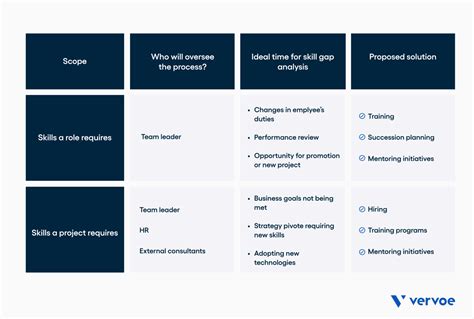Basic Specialist Training And Its Role In Skill Gaps

Explore how Basic Specialist Training addresses skill gaps in the workforce, its development process, effectiveness measurement, and frequently asked questions. In today’s fast-paced and ever-evolving job market, addressing skill gaps is essential for both employers and employees.
Basic Specialist Training emerges as a pivotal solution, equipping the workforce with the necessary skills to meet industry demands. This promotional article delves into the concept of Basic Specialist Training, illuminating its role in identifying and bridging skill gaps within organizations.
As we explore the development process of these training programs, we will showcase how they not only enhance individual competencies but also foster overall organizational growth. Furthermore, we’ll discuss methods for measuring the effectiveness of these programs, ensuring that both participants and employers reap the rewards of their investment. Join us as we uncover the transformative power of Basic Specialist Training and its vital contribution to workforce development.
Understanding The Concept Of Basic Specialist Training
Basic Specialist Training refers to the structured educational programs designed to equip individuals with the essential skills and knowledge required to perform specific roles or functions within a professional setting. Unlike broader training programs, Basic Specialist Training focuses on specialized areas, often addressing the distinct demands and challenges of particular industries or job functions. This targeted approach ensures that trainees can effectively acquire the competencies needed to excel in their designated fields.
The core objectives of Basic Specialist Training include:
- Enhancing job performance by providing relevant technical knowledge.
- Fostering professional development through hands-on experience and practical exercises.
- Ensuring compliance with industry standards and regulations.
- Promoting career advancement opportunities by offering certification or credentials.
Furthermore, Basic Specialist Training programs are typically tailored to meet the specific needs of the workforce, making them highly relevant and effective in addressing skill shortages. By focusing on both theoretical and practical aspects of a specialism, these programs empower individuals to confidently tackle their job responsibilities and adapt to rapidly evolving work environments. Ultimately, such specialized training contributes not only to personal growth but also to the overall productivity and efficiency of organizations.
Identifying Skill Gaps In The Workforce
Identifying skill gaps within a workforce is a critical step in enhancing overall organizational performance and ensuring that employees possess the necessary competencies to meet the demands of their roles. Recognizing these gaps can guide the development of Basic Specialist training programs that effectively target areas in need of improvement.
To successfully identify skill gaps, organizations can employ several strategies:
- Conduct Skills Assessments: Regular evaluations of employee skills can uncover deficiencies. Utilizing assessments helps to benchmark current skills against required competencies outlined in job descriptions.
- Gather Employee Feedback: Engaging employees through surveys or interviews can provide insights into their perceived skill gaps and areas for development.
- Monitor Industry Trends: Staying updated on industry advancements and emerging technologies is essential. Organizations can compare their employees’ skills with market demands to identify any discrepancies.
- Performance Reviews: Systematic performance evaluations are crucial. They can reveal patterns in performance decline or areas where employees struggle, highlighting potential skill deficiencies.
- Identify Training Needs: Conducting training needs analysis can help pinpoint specific areas where staff require further development through Basic Specialist training.
Once skill gaps are identified through these methods, organizations can prioritize areas for intervention, ultimately designing targeted Basic Specialist training programs that align with both individual and organizational goals. This not only enhances employee capabilities but also contributes to overall workforce competency.
The Development Process Of Basic Specialist Training Programs
The development of Basic Specialist training programs is a structured and thoughtful process aimed at addressing specific skill gaps identified within the workforce. This process typically consists of several key stages:

- Needs Assessment: This initial stage involves collecting data to identify the specific skills that are lacking in the workforce. Surveys, interviews, and feedback from team leaders can provide valuable insights into the areas where training is required.
- Defining Learning Objectives: Based on the needs assessment, clear and measurable learning objectives should be established. These objectives will guide the design of the training content and ensure that it meets the identified needs of the workforce.
- Curriculum Development: This stage involves creating the actual training materials and structure. It includes the development of course content, instructional methods, and assessment tools that align with the defined learning objectives.
- Implementation Planning: A comprehensive plan for implementing the training program should be developed. This includes scheduling training sessions, selecting instructors or facilitators, and determining the delivery methods (e.g., in-person, online, or hybrid).
- Delivery of Training: During this phase, the training is delivered to the participants. It’s essential to create an engaging learning environment that encourages participation and facilitates the assimilation of new skills.
- Evaluation and Feedback: After the training program is completed, evaluating its effectiveness is crucial. Gathering feedback from participants and assessing their performance can help in identifying areas for improvement and refining future iterations of the Basic Specialist training programs.
Each stage in this development process is critical to ensuring that the Basic Specialist training programs effectively meet the needs of the workforce and contribute to bridging skill gaps within organizations.
How Basic Specialist Training Bridges Skill Gaps
Basic Specialist training plays a crucial role in addressing skill gaps within various industries. By tailoring training programs to meet specific needs, organizations can effectively enhance the competencies of their workforce. Here are some key ways in which Basic Specialist training bridges these skill gaps:

- Targeted Skill Development: Basic Specialist training focuses on the essential skills required for specific roles. This targeted approach ensures that employees acquire the precise knowledge and abilities they need to excel in their jobs.
- Customized Learning Paths: By assessing the unique requirements of their workforce, organizations can design customized learning paths within the Basic Specialist framework. This adaptability allows for a more personalized learning experience, which can lead to improved engagement and retention of information.
- Hands-On Training Opportunities: Practical, hands-on experience is an integral part of Basic Specialist training programs. By integrating real-world scenarios and case studies into the curriculum, employees can develop problem-solving skills and apply their learning directly to their roles.
- Continuous Feedback Mechanisms: Basic Specialist training programs often incorporate regular assessments and feedback loops. This enables participants to identify areas for improvement, while also allowing organizations to adjust training content to better fit workforce needs.
- Enhanced Collaboration: By fostering a culture of learning and collaboration, Basic Specialist training encourages employees to share knowledge and best practices. This collective improvement helps to close skill gaps not only on an individual level but across teams as well.
Basic Specialist training is a powerful tool for organizations aiming to bridge skill gaps. By focusing on targeted development, customization, practical experience, and collaborative learning, companies can ensure their workforce is equipped to meet the demands of today’s fast-paced environments.
Measuring The Results Of Basic Specialist Training Effectiveness
To determine the effectiveness of Basic Specialist training programs, organizations need to implement robust measurement strategies that gauge not just knowledge acquisition but also practical application and overall impact on performance. Key metrics and methodologies can be grouped into three main categories: quantitative measures, qualitative feedback, and performance outcomes.
1. Quantitative Measures:
- Pre- and Post-Training Assessments: Conducting assessments before and after the training can quantify knowledge gains and highlight areas of improvement.
- Certification Rates: Tracking the percentage of participants who successfully obtain certifications post-training can also serve as an indicator of the program’s effectiveness.
- Employee Performance KPIs: Monitoring Key Performance Indicators (KPIs) relevant to the trained skills can show improvement and validate the training’s contribution to job performance.
2. Qualitative Feedback:
- Surveys and Questionnaires: Collecting feedback through surveys can provide insights into the trainee’s perceptions of the training’s relevance and effectiveness.
- Interviews and Focus Groups: Conducting interviews with participants can yield in-depth information about their experiences and the practical application of the skills learned.
3. Performance Outcomes:
- Job Performance Reviews: Incorporating training outcomes into regular performance reviews can reveal longer-term impacts on employee productivity and competency in their role.
- Retention Rates: Monitoring turnover rates post-training and the correlation with skill improvements can indicate the value of the training interventions.
Ultimately, measuring the effectiveness of Basic Specialist training is vital for justifying investments in training programs, ensuring alignment with organizational goals, and continuously improving training content and delivery methods. Proper measurement not only demonstrates a return on investment but also enhances the long-term strategy for workforce development.

Frequently Asked Questions
What is basic specialist training?
Basic specialist training refers to foundational education and training that equips individuals with essential skills and knowledge in a specific field or profession.
How does basic specialist training address skill gaps?
It addresses skill gaps by providing structured learning opportunities that enhance competencies required in the workforce, thus ensuring professionals are well-prepared for their roles.
Who benefits from basic specialist training?
Both individuals looking to advance their careers and organizations seeking to increase workforce competency can benefit from basic specialist training.
What are some examples of fields that require basic specialist training?
Fields such as healthcare, engineering, information technology, and education commonly require basic specialist training to ensure professionals meet industry standards.
How can employers support basic specialist training for their employees?
Employers can provide financial support, allocate time for training during working hours, and create partnerships with educational institutions to facilitate access to training programs.
What role do certifications play in basic specialist training?
Certifications validate an individual’s skills and knowledge acquired through basic specialist training, making them more marketable to employers.
What are the long-term benefits of investing in basic specialist training?
Long-term benefits include improved employee performance, increased job satisfaction, reduced turnover rates, and a stronger overall organizational capability.





